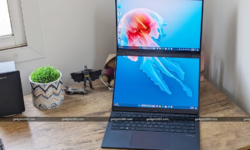Final Fantasy VII Remake’s reimagined battle system makes it feel like an all-new game
Blending the best elements of prior games into one cohesive system
/cdn.vox-cdn.com/uploads/chorus_image/image/66414781/FINAL_FANTASY_VII_REMAKE_E3_2019_screenshot_6.0.png)
Final Fantasy VII Remake is shaping up to be much more than just a nostalgia trip, and nowhere is that more apparent than in the game’s completely reimagined battle system.
When the game was first announced in 2015, many diehard fans appropriately expected a remake would mean a visual overhaul of more or the less the same turn-based RPG they fell in love with more than two decades ago. But Square Enix and the trio of legendary directors, including original character designer Tetsuya Nomura, that signed on to helm the project decided on something much more ambitious and risky: a total reimagining of FFVII from the ground up. That includes blowing up the tried-and-true turn-based system and replacing it with something far more modern.
The trade-offs in that broader decision to reboot the whole game have already been made abundantly clear. Instead of one giant game, players are getting multiple entries. The first installment centers solely on the city of Midgar, which takes up, by some estimates, a little more than the first quarter of the original game’s first of three discs. But the experience we are getting on April 10th makes up for covering that small slice of the overall story by completely rebuilding every element — from the dialogue, cutscenes, and subplots to every environment, gameplay system, and boss battle.
:no_upscale()/cdn.vox-cdn.com/uploads/chorus_asset/file/19754242/fffvii_remake_7.jpg)
After spending close to four hours with FFVII Remake late last month during a San Francisco demo, I’m confident this gamble has paid off in a big way with a far more fully realized version of the world than any of its disparate spinoffs have managed to achieve. And best of all is that its most impressive component is the one players will be spending most of their time interacting with: the combat.
:no_upscale()/cdn.vox-cdn.com/uploads/chorus_asset/file/19754248/fffvii_remake_4.jpg)
:no_upscale()/cdn.vox-cdn.com/uploads/chorus_asset/file/19754249/fffvii_remake_6.jpg)
Unlike the FFVII many are familiar with, the remake features a fascinating hybrid battle system closer to what you’d find in Final Fantasy XV or Kingdom Hearts. Yet instead of sticking closely to one of those two styles, the remake borrows the best of the series’ action-based real-time systems and blends them with the turn-based strategy design that made the original such a lauded RPG. It feels like a polished, modern version of Final Fantasy XII combined with something from an action-heavy studio like PlatinumGames.
We’ve seen a bit of this reimagined take on combat in early gameplay videos and in the big, flashy E3 demo last year that showed off the game’s opening boss fight. But I was able to go deep with the battle system through the first two hours of the game and then two later boss fights, one with Tifa and Barret in my party and another with Tifa and Aerith. I walked away impressed with not just how new and fresh everything felt, but also how much of the original game’s spirit felt intact.
Never once did I feel like I was leaning too far into just running around with Cloud and swinging my Buster Sword, or spending inordinate amounts of time digging through menus to cast spells or use items. Everything flowed nicely, and by the end of my demo, I was seamlessly switching between Cloud and Tifa to drop damage-heavy combos and special moves while quick swapping to Aerith to dive into the menu for heals, magic, and the occasional summon.
It seems like a considerable amount of thought went into how to evolve the original game’s take on RPG combat for a modern setting. There are no more random battle encounters. Enemies typically find you (although you can avoid them if you’re crafty) and you then engage in an open combat arena. Once the mode switches, you can run around, dodge attacks, and perform a mix of character-specific combos and special moves that can be various levels of effective depending not just on what you’re fighting, but also how far away and how large the enemy is.
In that sense, it’s similar to FFXV but in a way that feels less slapdash and much more deliberate and refined. For instance, Barret is great for long-distance fighting thanks to his gun-equipped arm, and it’s often required you switch to him to help stagger flying enemies or foes with hard-to-reach weak points so you can then swap to Cloud and drop heavy sword combos.
Tifa, on the other hand, is agile and devastating in melee situations, letting her cover a ton of ground with combos and special attacks in a way that makes her the most fun to control when you’re fighting large amounts of standard enemies at once. Aerith, like Barret, is great at range, but her magic stats make her an excellent healer and spellcaster, so you can often delegate those tasks to her while you focus on damage-dealing with the others.
At any given moment, you can slow the combat down to a crawl with what’s known as tactical mode and pull up the menu, which lets you perform magic, use items, or queue up one of quite a few more powerful special moves dependent on the gear you have equipped. Any menu-specific move requires you to charge the ATB (for Active Time Battle) bar, which has been updated from the original game’s ATB system that first helped popularize Square’s unique take on turn-based battling.
:no_upscale()/cdn.vox-cdn.com/uploads/chorus_asset/file/19754245/fffvii_remake_3.jpg)
Now, instead of just waiting for your character’s turn to come around, you have to perform melee attacks to charge the bar. You can also sit back away from the danger and let it charge on its own more slowly while the AI controls your companions. Once full, however, you can unleash special attacks and magic, some of which require just one bar, while others — like summons — require a full two. This time around, the summons stick around on the battlefield and help you fight in real time, and you can even have characters like Ifrit or Shiva perform special attacks by charging the summoner’s ATB bar to full and casting the spell manually.
There will be some settings options for players who don’t like this hybrid system, including a classic mode for people who want to just play a turn-based version of FFVII Remake in the spirit of the original. The original game featured a customizable ATB system depending on how difficult and fast-paced you wanted the game, but it ultimately meant just picking what your characters did from a menu and then watching the animations play out. You can still do that in the Remake, but in my opinion that sounds like it’ll drain the combat system of its much more vibrant elements.
The best part, in my short time with the game, was the freedom the battle system allows. Sure, you can button mash your way to victory in most battles, just like you could just mindlessly select “attack” in the original’s turn-based system and more or less breeze your way through the mobs of random enemies. It’ll certainly look a lot cooler with the updated graphics and Cloud’s excellent sword animations. And only in the really hard boss battles I encountered did I have to really think about how to maximize my use of the ATB bars and mix and match proper items and magic use. I could conceivably see someone playing the game and almost never switching off Cloud unless the game literally forces them to.
But a lot of the fun here comes from changing characters on the fly, experimenting with special moves, and really mastering the flow of the new system. Every character has a unique style to them that feels like playing a totally different game when you switch over. Plus, there are tons of new customization options for weapons, skills, and the game’s materia magic system that stand to make overall combat much deeper than the original.
:no_upscale()/cdn.vox-cdn.com/uploads/chorus_asset/file/19754189/fffvii_remake_2.jpg)
In one particular telling situation, I found myself on the demo’s final boss battle: a terrifying and enormous beast known as Aps that I distinctly remember fighting in the Midgar sewers so many years ago. The boss was not only vicious, fast, and powerful, but it had high defense. My melee attacks weren’t doing much. I was struggling to get magic spells cast with Aerith because she was getting knocked out too often.
Soon enough, I was out of phoenix downs to revive my teammates and I made the call to sacrifice both Cloud and Tifa and keep Aerith alive with my last elixir item, with the hopes Aerith’s fire magic and her self-healing limit break might carry me to victory. I was right — only just barely. I survived by the skin of my teeth by timing my dodges to avoid the creature’s tornado attack and summoning Ifrit to help me take it down.
It was an exhilarating fight and exactly the kind of cinematic set piece moment that felt both earned and organic, and not something the game just handed to you by way of a cutscene. At that moment, I felt like I was playing an original and proper action RPG, and I almost forgot entirely that it was instead a remake of a 23-year-old classic. And that’s the beauty of FFVII Remake — in the heat of these kinds of battles, it feels brand new.




